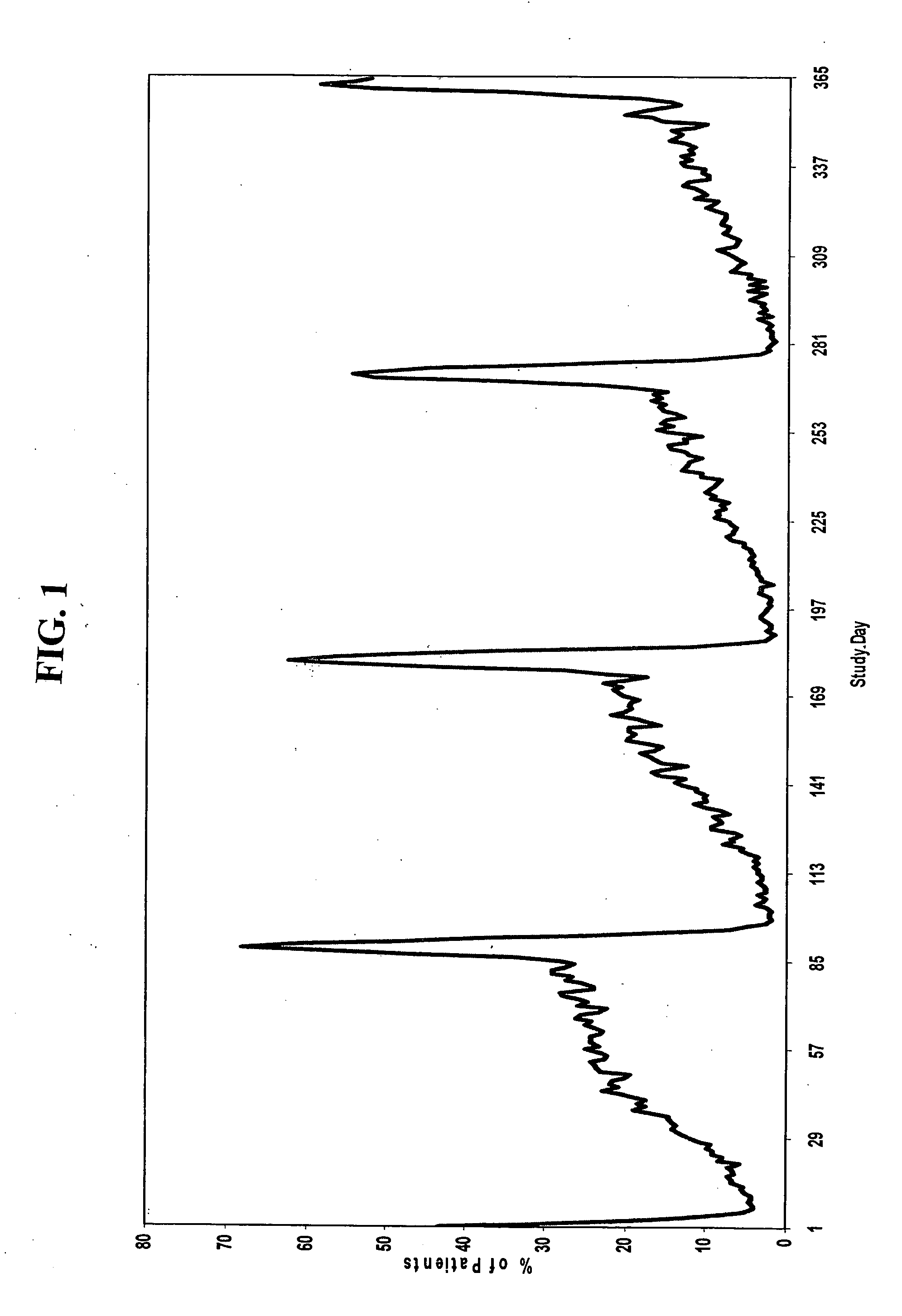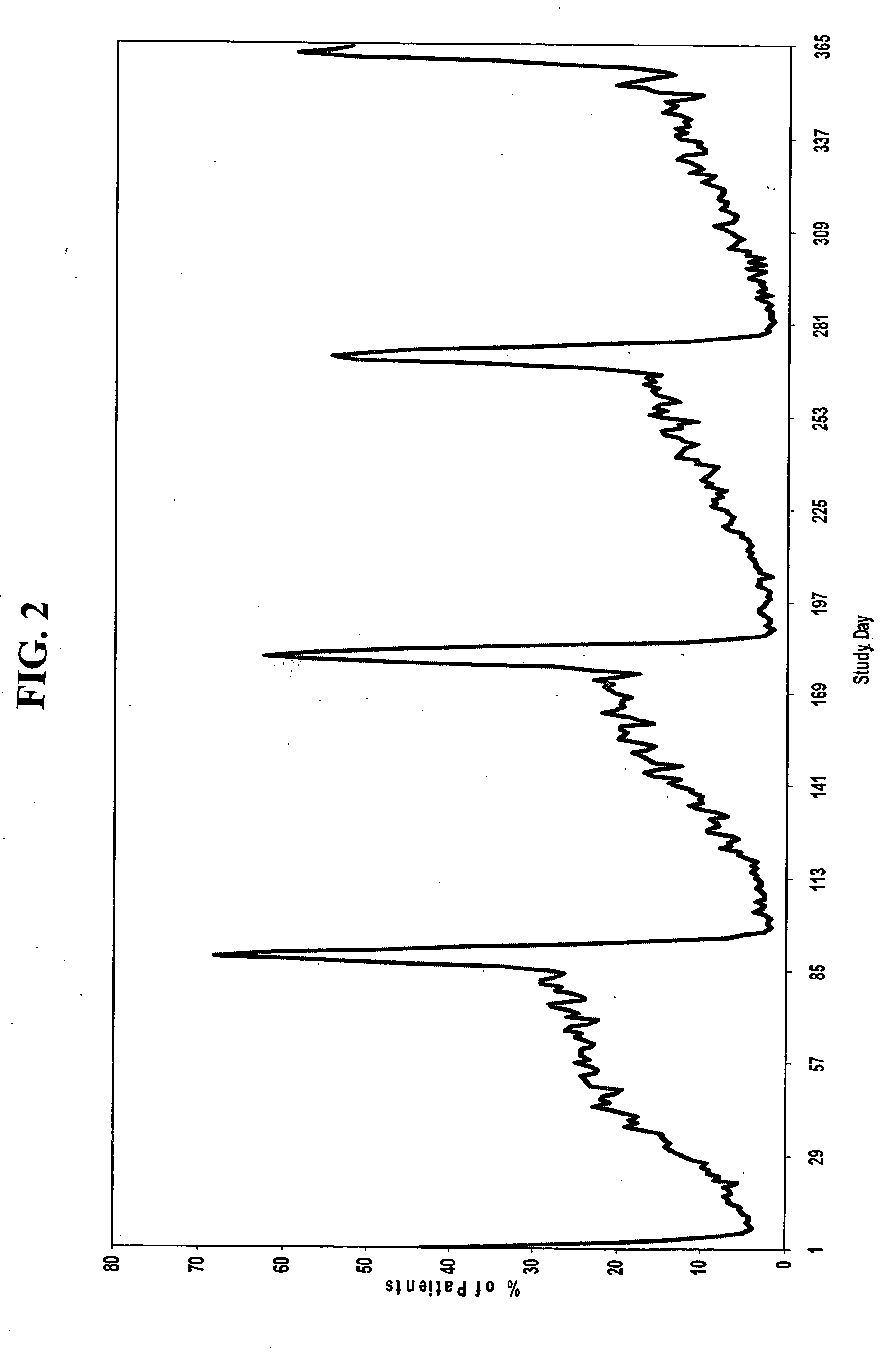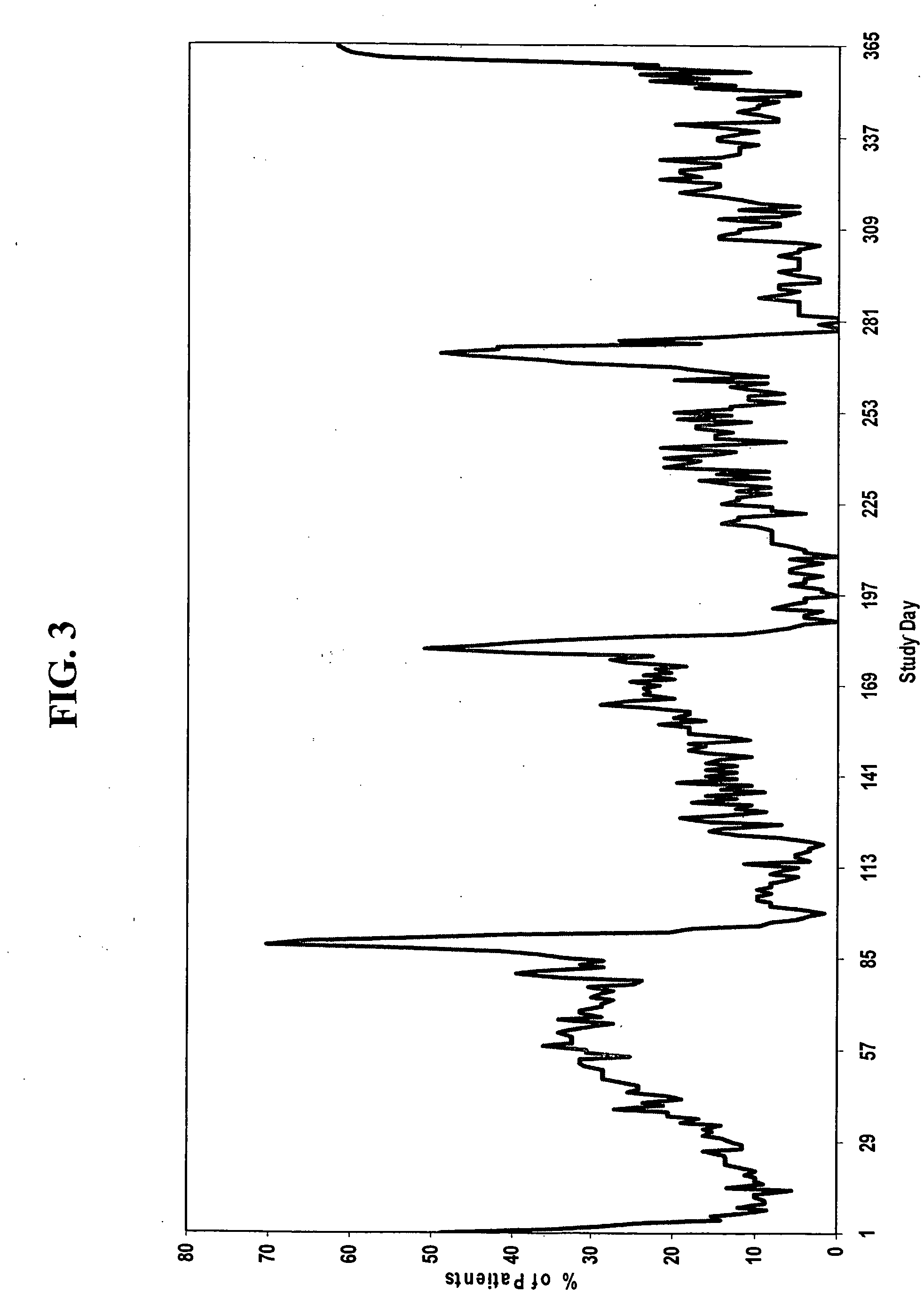Methods of hormonal treatment utilizing contraceptive regimens with continuous estrogen administration
a technology of hormonal treatment and contraceptive regimen, applied in the field of hormonal treatment, can solve the problems of increased bleeding problems, more varied spectrum of side effects of progestin-only preparations, etc., and achieve the effect of minimizing uterine bleeding
- Summary
- Abstract
- Description
- Claims
- Application Information
AI Technical Summary
Benefits of technology
Problems solved by technology
Method used
Image
Examples
example 1
[0186] A group of women, each woman having one of the conditions described above, are administered a combined dosage form of estrogen and progestin monophasically for 21 to 26 consecutive days, followed by administration of low-dose estrogen for 2 to 10 days, in which the daily amounts of estrogen and progestin are equivalent to about 5 μg to about 50 μg of ethinyl estradiol and about 0.05 mg to about 1.5 mg of levonorgestrel, respectively.
[0187] For example, a group of women, each woman having one of the conditions described above, are administered monophasically a combination of estrogen and progestin for 25 days, followed by administration of estrogen for 3 days. Each woman is administered 25 oral contraceptive tablets on days 1 through 25 of the menstrual cycle, one tablet per day, each tablet containing 150 μg levonorgestrel and 30 μg ethinyl estradiol. On days 26 through 28 of the cycle, each woman is administered 3 tablets, one tablet per day, each tablet containing 30 μg et...
example 2
[0189] A group of women, each woman having one of the conditions discussed above, are administered a combined dosage form of estrogen and progestin, preferably monophasically, for 21 to 26 consecutive days, followed by administration of estrogen for 2 to 10 days, in combination with the antidepressant fluoxetine hydrochloride, in which the daily amounts of estrogen and progestin are equivalent to about 51 g to about 50 μg of ethinyl estradiol and about 0.05 mg to about 1.5 mg of levonorgestrel, and the fluoxetine hydrochloride is in an amount of about 5 mg to about 120 mg. Oral contraceptives with initial doses of fluoxetine at either 5 mg or 10 mg / day can be started to avoid any activating side effects that may lead to noncompliance. The dose can then be increased as needed. Fluoxetine can also be given intermittently during the late luteal phase, which is typically 1-2 weeks before menses. In addition, a one-time or once-weekly dose of about 90 mg of fluoxetine can be administered...
example 3
[0192] Another aspect of the invention encompasses a bridged extended cycle regimen that allows a woman the option of limiting her menstrual periods to about four times per year. A group of women, each woman having one of the conditions discussed above, are administered a combined dosage form of estrogen and progestin monophasically for about 81 to 89 days, followed by administration of estrogen for 2 to 10 days, in which the daily amounts of estrogen and progestin are equivalent to about 5-50 μg of ethinyl estradiol and about 0.025 to 10 mg, preferably about 0.05 to 1.5 mg, of levonorgestrel, respectively.
[0193] For example, a group of women, each woman having one of the conditions described above, are administered 84 oral contraceptive tablets on days 1 through 84 of the menstrual cycle, one tablet per day, each tablet containing 150 μg levonorgestrel and 30 μg ethinyl estradiol. On days 85-91 of the cycle, each woman is administered 7 tablets, one tablet per day, each tablet con...
PUM
 Login to View More
Login to View More Abstract
Description
Claims
Application Information
 Login to View More
Login to View More - R&D
- Intellectual Property
- Life Sciences
- Materials
- Tech Scout
- Unparalleled Data Quality
- Higher Quality Content
- 60% Fewer Hallucinations
Browse by: Latest US Patents, China's latest patents, Technical Efficacy Thesaurus, Application Domain, Technology Topic, Popular Technical Reports.
© 2025 PatSnap. All rights reserved.Legal|Privacy policy|Modern Slavery Act Transparency Statement|Sitemap|About US| Contact US: help@patsnap.com



